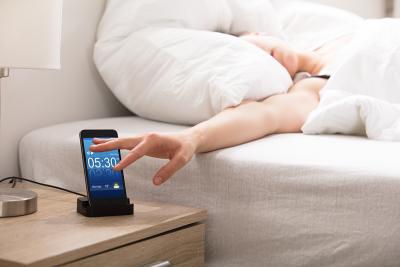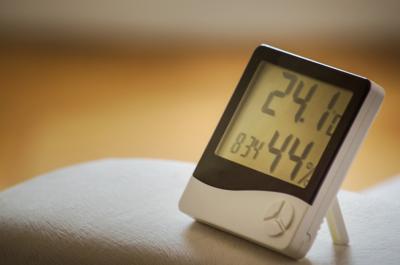Remember when you were a kid and had to do homework in the living room or bedroom floor? It wasn't the most productive way to learn, was it? The good news for kids nowadays is that there are plenty of ways to create a study space that lets kids be productive, without ruining the fun and safety of their bedroom!
So let's dive into how to create the best study space for your child, plus our recommended innovative kids' beds, to boost their productivity.
Is your child struggling to focus on their homework?
Sometimes it can be hard to get your kids to do their homework, whether it's younger kids who can't focus or teenagers who simply don't want to do it. But creating a space that is uniquely theirs and provides a calm environment for them to work in can help to keep them productive.
So we bet you've thought, how should I create a study room for my kids? But it doesn't have to be a separate room; you can easily create a productive study space in your kid's bedroom.
Not only does it save on space in the rest of your home, but their bedroom is their safe place, and it can encourage them to have a calm and relaxed mindset. So how can you go about creating this kids' study space? Well, here at Happy Beds, we've come up with some great tips that can help, from incorporating a bed with a desk to creating a calming space!
How to create a study room for your child

1. Tailor the space to your child
No one will know your child better than you, so think about how they like to learn. Are they a visual learner who likes to watch videos or can devour textbooks? Maybe they're someone who understands better by writing everything out. There are many different types of learning out there, so figure out how they learn best, and you can start to tailor their study space.
For example, kids who like to watch videos may prefer to do so on a laptop or even a television screen, so they will need desk space to accommodate this. Whilst you could choose a bed with a desk such as a midsleeper, maybe consider something with a larger desk such as a high sleeper or a gaming bed. Don't be alarmed by the name; these beds with desks are designed to accommodate computer or television screens!
Alternatively, if they prefer to read, they will probably like a kids' bed with storage as it will give them somewhere to put their books. There are even bookcase beds available so that they can keep their books neatly stored!

2. Keep the distractions to a minimum
Kids and teenagers are renowned for getting distracted easily, which can impact their learning ability, and their bedroom will be full of things they'd much rather be doing. So, how do you reduce the distractions available to them to allow them to concentrate on their schoolwork?
Firstly, it might be useful to agree with them that they give you their phone and only get it back once they've finished their work. It might seem harsh, but the allure of checking social media or talking to friends will be there as long as their phone is there. Another thing could be to keep a tidy bedroom.
This might sound a bit far-fetched, but a cluttered room can lead to a chaotic mind, so consider a kids' bed with storage features such as shelving or drawers. Encourage them to give their room a little tidy beforehand to help burn off some of their youthful energy to leave them in the right frame of mind to start studying.

3. Consider innovative ways to combine sleep and studying
Your kid might baulk at having a bed with a desk in their bedroom, even if it's something like a mid sleeper with a desk that slots into the frame. As kids get older, they start to want to have sleepovers, and the most popular option is bunk beds for kids!
Thankfully, you don't need to sacrifice their schoolwork to accommodate an extra visitor, as you could choose a unique bunk bed with a desk to combine friends and studying. This means they can have their sleepovers whilst still having somewhere to focus on schoolwork! If you opt for one of our bunk beds for kids, check out our bunk bed buying guide for plenty of useful information alongside our kids' mattress buying guide so you can get the perfect mattress for your child.

4. Let your child personalise their space
As excited as you may be to create a study space in your child's bedroom; it's important to remember that it is still their bedroom. This is where they will sleep and spend their free time, so their study space should integrate into their bedroom.
Let them decorate the walls of their room with posters of their favourite singers or films to bring some personality to it. However, they want to decorate it, whether displaying collectables on a kids' bed with storage shelving or covering it in stickers of their favourite show; try and encourage this! Maybe add a whiteboard to their bed frame and write supportive notes, or let them doodle to relieve some frustration or stress.
Letting them personalise their study space can help reduce their resentment towards their schoolwork and let them keep their bedroom as a fun place for them to spend time. Check out our blog exploring themed kids' bedroom ideas to find some more inspiration!

5. Explore how colours can affect learning
We know how exciting it was as a kid to be able to get your bedroom painted in your favourite colour, but did you know that colour can also have an effect on how well your child learns? Your child might love the colour red, but it's not helpful when it comes to studying as it's considered too stimulating.
Green is a colour that is associated with nature and helps to relax us, which in turn can help to improve your child's concentration. A soothing room in green, or with plenty of green accents, can boost focus, making them more eager to complete their schoolwork.
On the other hand, blue is often considered to be the colour of productivity and is especially helpful for children who are learning challenging subjects; notice how many big tech companies are blue! It's also a very calming colour as well, with light blue being considered far more friendly than dark blue. Take a look at some colour theories to get a better idea of what will suit your child best, and the best news is that we have plenty of kids' beds in many colours to choose from!
Are you ready to start designing your child’s study space?
You might be tempted to put off designing a study space for your child until after term starts, but we'd recommend creating this before they head back to school! This means you can work with your child to ensure they have the space they need and give them a positive mindset for the school year ahead.












